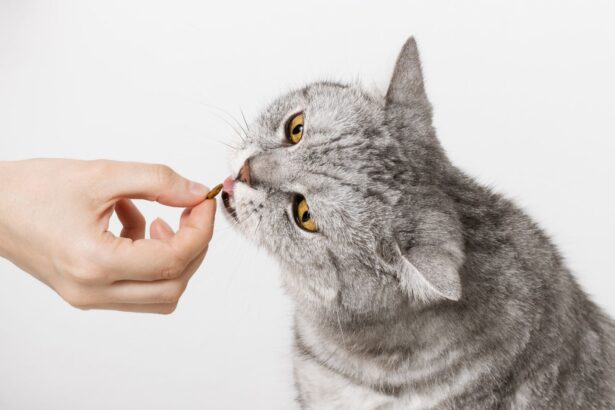When your cat “attacks”: what’s really going on?
Few moments are as startling as your sweet fluff turning into a mini tiger. Breathe: most cat “attacks” are bursts of fear, pain, or hunter’s energy, not malice. Understanding what your cat is saying with her body is the first step to restoring peace at home.
Red flags to spot before a swipe
- Stiff posture, tail puffed like a bottle brush, ears flattened sideways or back.
- Wide pupils, fixed stare, twitching skin along the back, rapid tail lashes.
- Low growls, hissing, or sudden silent freeze followed by a quick strike.
These are all “I need space” messages. Learn more about the telltale signs of stress in cats to catch tension early and step back in time.
Common roots of feline aggression
- Fear/defense: surprise, looming hands, or noisy visitors.
- Pain/medical: arthritis, dental pain, or skin irritation can make touch feel threatening.
- Play/prey overflow: pent-up energy turns your ankles into “moving prey.”
- Redirected aggression: your cat gets aroused by a window rival or loud bang and vents at the nearest target.
- Territorial or maternal: guarding space, resources, or kittens.
Mistake to avoid: scolding or punishment. It adds fear to fear, fuels mistrust, and can make the next incident more intense. Choose calm distance and plan for prevention instead.
What to do in the moment: safety first
Do’s and don’ts during an incident
- Do: Freeze your body, turn your side, and soften your gaze. Slowly step away to give an exit route.
- Do: Slide a cushion, large cardboard, or laundry basket between you and the cat as a safe barrier.
- Do: Drop a few treats to the side to redirect attention, then leave the room.
- Don’t: Shout, wave your arms, or stare—these escalate arousal.
- Don’t: Grab or corner the cat. That’s how scratches and bites happen.
- Don’t: Reach in to “break up” a fight with bare hands—use a door, blanket, or board instead.
If you’re bitten, clean the wound and seek medical advice—cat bites can infect quickly.
How to calm an aroused cat
- Create a quiet “cool-down” zone with a litter box, water, food, and hiding spots. Close the door and let her reset.
- Use soft lighting, gentle background noise, and avoid sudden visits. Let her come out when she’s ready.
- Consider pheromone diffusers and a predictable routine to lower overall stress.
Fun fact: Cats often show “displacement” behaviors when conflicted—sudden grooming or yawning that says, “I’m stressed.” Some cats also mellow with a pinch of catnip; others get bouncy, so test on a calm day first.
Preventing the next attack
Play, enrichment, and routine
- Schedule two short daily play sessions with a wand toy to mimic a real hunt: stalk → chase → pounce → “kill” → then feed. This completes the prey cycle and drains the urge to ambush your feet.
- Offer food puzzles, window perches, and vertical shelves to channel energy and build confidence.
- Rotate toys weekly to keep novelty alive and boredom at bay.
Pro tip: Set up a “prey runway”: a clear corridor where you guide the wand toy along walls and under cushions. Ending with a treat signals “hunt complete,” which reduces ankle assaults.
Short training bursts build self-control and communication—yes, you can train your cat kindly using rewards and timing.
Better socialization and careful introductions
- For new people or pets, start with scent swapping, then short, positive visual moments.
- Keep sessions brief and sweet. End before stress spikes.
- In multi-cat homes, use parallel play and feeding to pair each other’s presence with good things.
When to call the vet or a behavior pro
- Any sudden behavior change, sensitivity to touch, or increased irritability deserves a vet check.
- If aggression persists, a qualified behavior professional can tailor a plan and prevent setbacks.
Extra nuggets to keep everyone safe
- Surprising but true: Redirected aggression can last hours. Give 24–48 hours of calm separation if a big trigger (like a window standoff) happens.
- After a fight, reintroduce gradually with doors, then cracked doors, then short supervised visits.
- Teach a “scatter cue” (lightly toss treats away) that your cat associates with moving off calmly.
- Curious about mouthy moments? Explore why cats bite to fine-tune your prevention plan.
FAQ
How do I stop my cat from attacking me suddenly?
Freeze, look away, and step aside to create space. Place a barrier (cushion or cardboard), drop treats away from you, then let your cat decompress in a quiet room.
Why is my cat attacking me out of the blue?
It’s often fear, pain, redirected arousal, or pent-up prey drive. Rule out medical pain with your vet and increase structured play to drain energy.
How long should I separate cats after a fight?
Until both are fully relaxed—often 24–48 hours after a major trigger. Reintroduce slowly with scent-swapping and short, positive sessions.
Do pheromone diffusers help with cat aggression?
They can lower baseline stress for many cats, especially alongside routine, enrichment, and gentle training. Use them as part of a broader plan.







